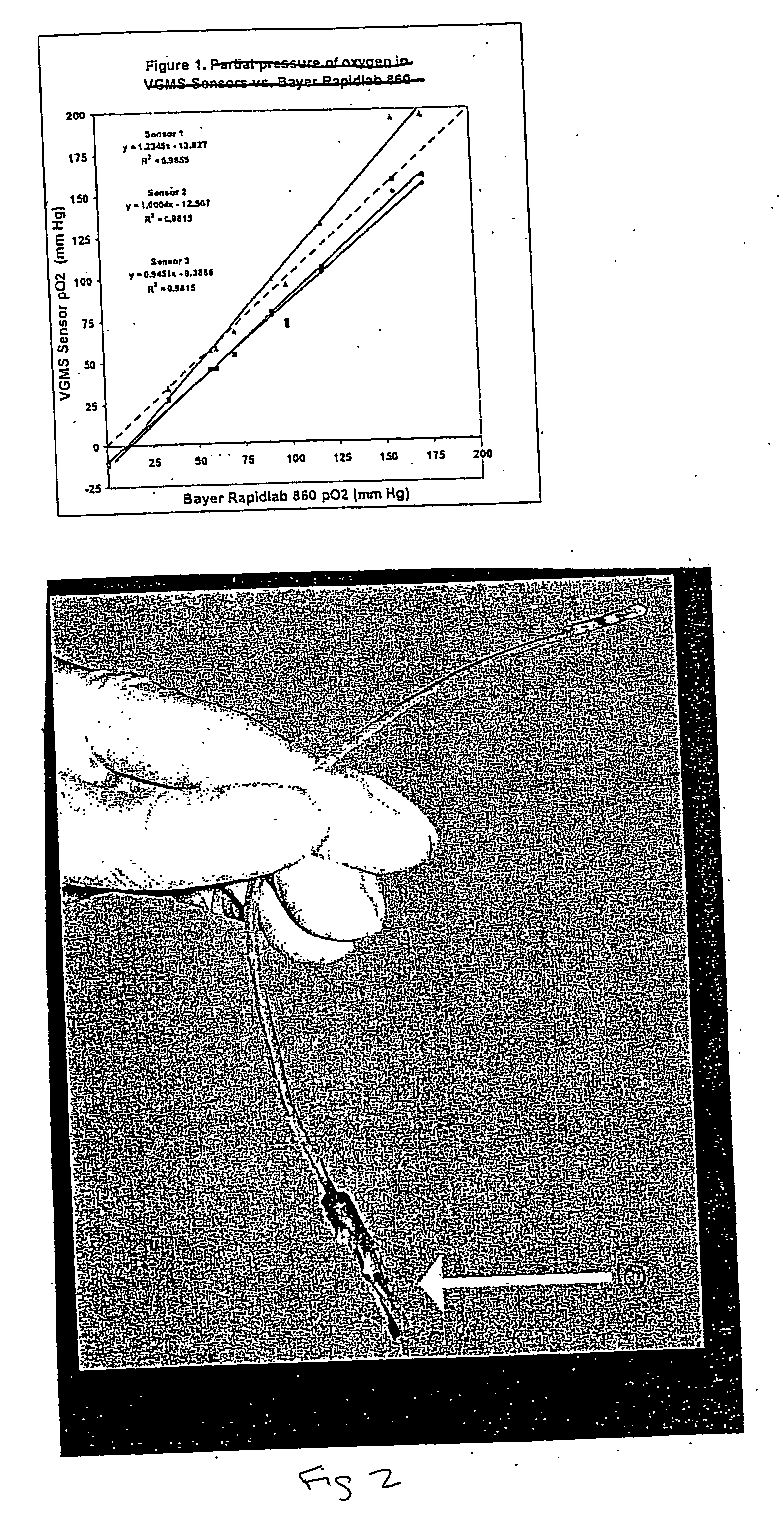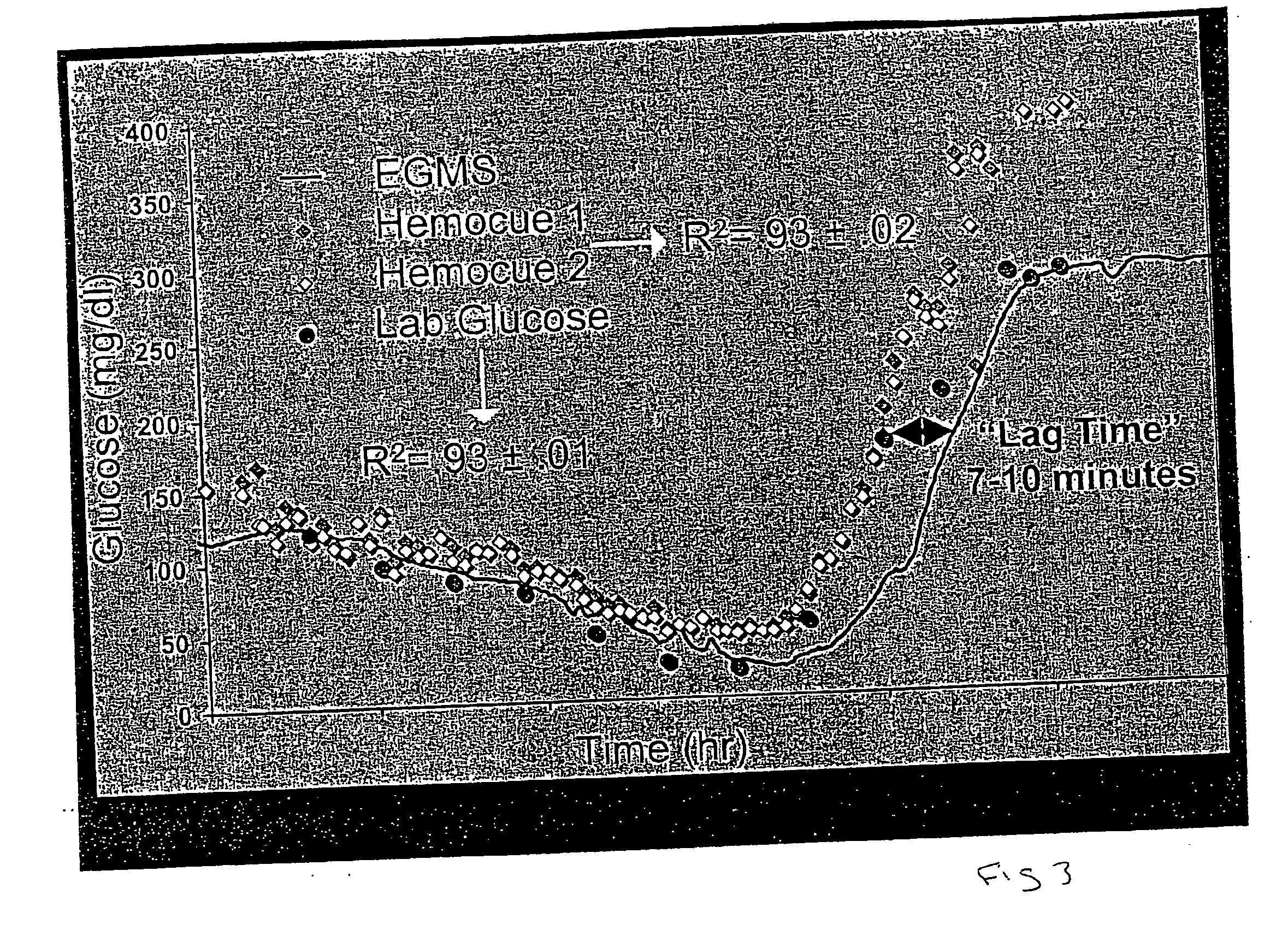Continuous Analyte Monitor and Method of Using Same
a technology of continuous analyte and monitor, which is applied in the field of blood analyte testing system, can solve the problems of inability to bring this evolving continuous glucose monitoring technology to the market, inaccurate bedside devices, and inability to meet the needs of patients,
- Summary
- Abstract
- Description
- Claims
- Application Information
AI Technical Summary
Problems solved by technology
Method used
Image
Examples
example 1
[0080]In light of the reduced mortality associate with strict glycemic control and insulin infusion in critically ill patients, there is a vital need for reliable real-time continuous glucose monitoring In the intensive care unit. An intravascular device that measures serum glucose concentration on a continuous basis has been developed: Extracorporeal Glucose Monitoring System (EGMS, Medtronic Minimed, Northridge, Calif.). The device is an electrochemical sensor 10 in a 7.5 French silicone catheter that measures glucose concentration using a glucose oxidase reaction. In this study, the first use of continuous intravascular glucose monitoring in an extracorporeal membrane oxygenator (ECMO) circuit is described.
Methods
[0081]In a bench study, a neonatal ECMO circuit was primed with saline and three EGMS sensors were inserted at the pre-bladder, pre-oxygenator, and post-heat exchanger locations. The saline was then displaced per ECMO protocol with human blood products. Circuit blood glu...
example 2
[0084]Continuous monitoring of glucose as well as partial pressure of oxygen (pO2) has become a desirable tool in the care of critically ill patients. A continuous glucose and pO2-monitoring device was designed for insertion into an extracorporeal membrane oxygenation (ECMO) circuit: Extracorporeal Glucose Monitoring System (EGMS, Medtronic Minimed, Northridge, Calif.). The device is an electrochemical sensor that functions as an amperometric Clarke electrode housed in a 7.5 French silicone catheter. It is connected by a wire to a transmitter, which sends glucose and pO2 data each minute to a nearby computer.
Methods
[0085]The EGMS device was placed into a saline-primed neonatal ECMO circuit using a 0.8 m2 silicone membrane oxygenator at three positions: pre-bladder, pre-membrane, and post-heat exchanger. The catheter was introduced into the ECMO circuit via a hemostatic valve. The saline was then displaced per ECMO protocol with human blood products. Temperature was maintained at 36°...
PUM
 Login to View More
Login to View More Abstract
Description
Claims
Application Information
 Login to View More
Login to View More - Generate Ideas
- Intellectual Property
- Life Sciences
- Materials
- Tech Scout
- Unparalleled Data Quality
- Higher Quality Content
- 60% Fewer Hallucinations
Browse by: Latest US Patents, China's latest patents, Technical Efficacy Thesaurus, Application Domain, Technology Topic, Popular Technical Reports.
© 2025 PatSnap. All rights reserved.Legal|Privacy policy|Modern Slavery Act Transparency Statement|Sitemap|About US| Contact US: help@patsnap.com



